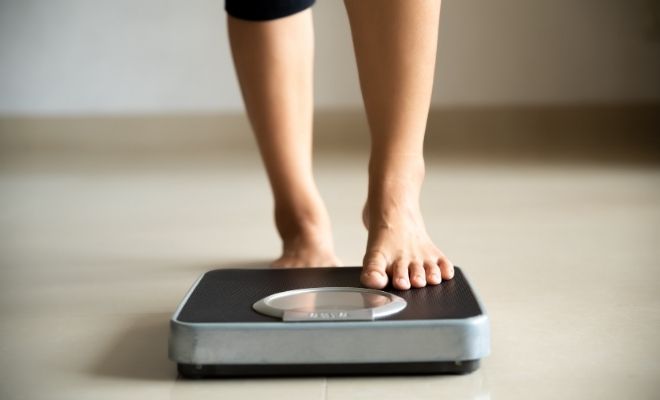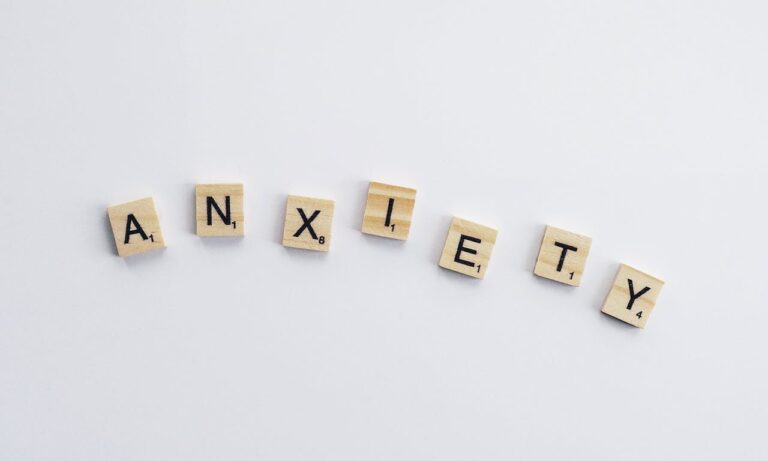Anxiety manifests itself in many ways on a physical and psychological level and perhaps one of the symptoms that scares us the most is difficulty breathing. That feeling of lack of air, hyperventilation, agitated breathing, is quite scary because the most obvious thought is that we are going to die of suffocation. It’s hard to breathe when you have anxiety, right? And it costs much more when you are about to suffer an anxiety crisis or a panic attack. But that lack of air can be stopped and we will tell you how.

What is anxiety hyperventilation?
Hyperventilation is one of the first symptoms of anxiety. It appears when you have a crisis or feel emotionally overwhelmed. Then the others arrive, it’s true, but the first thing you realize is that you’re short of breath, you’re drowning or so it seems, and you start to hyperventilate.
Difficulty breathing gives you the feeling that you are going to drown or suffocate due to lack of air. The fear of dying increases anxiety, you will have already verified that many times. And it is the feeling of lack of air that causes hyperventilation. Let’s see what circle of fear this gets you into.
You notice difficulty breathing, so you are afraid. Fear causes you to breathe faster and deeper, so you find yourself over breathing. This is how you become short of breath, because you are breathing faster than your lungs can work. It is then that you notice the pressure and pain in the chest, symptoms that you cannot help but relate to a heart attack or some cardiovascular problem. And the fear of dying grows bigger. You can’t manage it anymore.
The effects of hyperventilation on the body
Then comes everything else. Because difficulty breathing, if you don’t stop it in time, will inevitably lead to an anxiety crisis. It is the lack of air that causes the rest of the symptoms, since hyperventilation breaks the balance of the amount of oxygen and carbon dioxide that the blood should have. This lack of balance is the origin of many other symptoms: sweating, tremors, tingling in the legs and arms, parenthesis when a part of the body falls asleep completely, dizziness, muscle tension, a lump in the throat or stomach, visual disturbances, chills, depersonalization, etc.
Knowing this, it is logical to think that we could avoid an anxiety attack or a panic attack if we were able to remedy that initial difficulty in breathing. But before we get down to business, it is worth remembering something very important: hyperventilation is not going to kill you.
Shortness of breath is not dangerous to your health
It must be recognized that when anxiety overflows it is very difficult to think clearly. And the first thing that comes to mind when you feel short of breath is that you are going to die. The space (or time) to reason in the middle of a crisis is very short, so you have to react in those few seconds when your mind can still function clearly.
But if you don’t get it, nothing happens. You already know that the anxiety crisis passes by itself in a few minutes and as much as death by suffocation seems like the most obvious and probable option, it is not. Doctors insist that physiologically it is not possible to suffocate from this anxiety-produced hyperventilation.
You are short of breath; it is true, because your lungs cannot work with that excess air that you are introducing by breathing faster and faster. But hyperventilation is nothing more than an emergency response from our body indicating that you must prepare to fight or flee in the face of danger. Since you are not going to do any of that because there is really no threat, but rather it is a wrong warning of overwhelmed and misplaced anxiety, you end up breathing with a greater amount of air than you need.
As you can see, the feeling of lack of air is actually an excess of air that is impossible to manage. Surely while you are reading this you are understanding what happens to you before suffering an anxiety attack, but it is more difficult to stop and think about it when it is already happening, right?
What to do when feeling short of breath due to anxiety?
Well, you have to try, because only by stopping hyperventilation will you be able to stop an anxiety attack. And what should be done in the face of that feeling of lack of air? Well, turn to conscious breathing , one of our best tools for anxiety management. Do you know how to do that breath? Write down the steps.
1 You can do these breathing exercises sitting or lying down, with your eyes open or closed.
2 Place one hand on the chest and the other on the abdomen.
3 Try to be dressed in comfortable or loose clothing that does not tighten. Unbutton buttons or belt if necessary.
4 Inhale through the nose for 4 seconds. Go counting the seconds mentally and try to pay attention to the path that the air takes.
5 Hold the air in for another 4 seconds and continue to focus your mind on that air.
6 Exhale through the mouth, releasing the air very slowly after having followed the same path with your mind as the air does.
7 Try not to breathe too deeply or shallowly. Breathing is as natural as possible.
With this exercise you will recover your normal breathing and you will be able to stop the impending anxiety crisis, but we know that in these moments it is difficult to remain calm and take care of anything, since you are paralyzed by fear. For this reason, when we talk about anxiety, we insist on doing these breathing exercises a couple of times every day.
It does not matter if you feel better, if you are calm, if today there is no trace of nerves or anguish, keep doing the breathing exercises, do not leave them for a moment of tension because you will not be able to resort to them. The objective is that you include this way of breathing among your daily habits so that when you have to use it to stop a crisis; you can do it without thinking, automatically.
The bag trick for anxiety
Surely you have seen more than once put a bag in the mouth of a person who is suffering from an anxiety attack. Does this trick work? It looks like it is. We have already commented that hyperventilation produces an imbalance in the amounts of oxygen and carbon dioxide in the blood. More specifically, the amount of oxygen increases and the amount of carbon dioxide decreases alarmingly.
By placing a bag in the mouth for that person to breathe, what is achieved is that carbon dioxide increases. As you breathe into the bag, oxygen is gradually reduced and balance is eventually restored. However, care must be taken when placing a bag in the mouth of a person who is suffering from an anxiety attack. It is necessary to calm that person down, speak softly and let them know that we are going to put a bag on their face, that they have to breathe in that bag.
And, of course, you don’t have to leave the bag for long. It is convenient to take a few breaths into the bag and alternate them with breaths out. In a few minutes, the rate of breathing will return to normal. A trick, that of the bag, which can also be done by yourself to recover your breath and stop the crisis.
Another recommendation if you don’t have a bag handy is to use your own fist as a bag or receptacle that collects your own carbon dioxide. You put your fist in your mouth and exhale. When breathing in, do it also through the mouth, with a natural breath and without forcing. Instead of oxygen you will inhale your own dioxide, balancing both levels.






